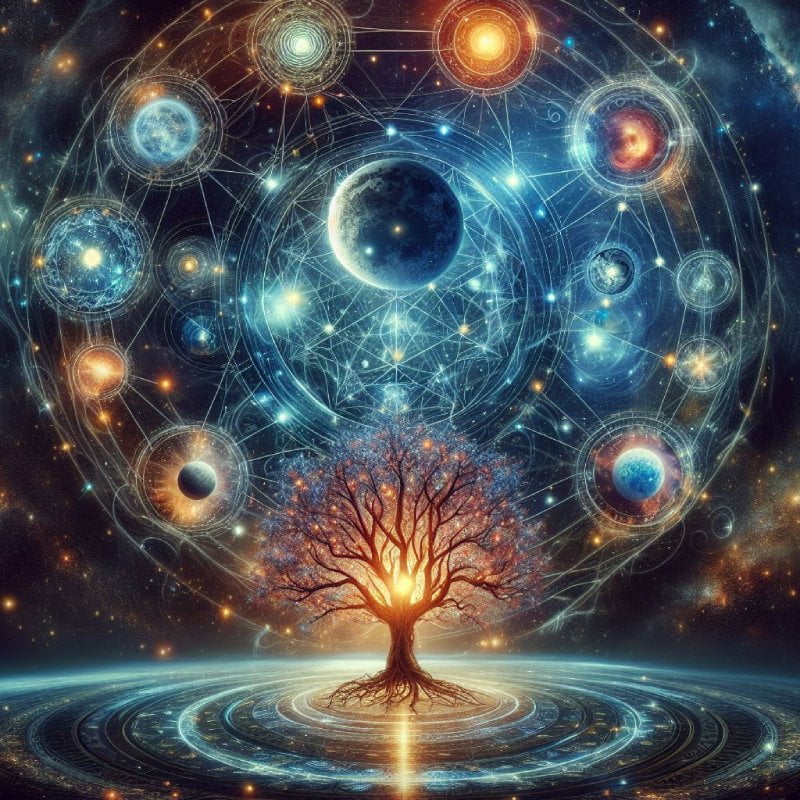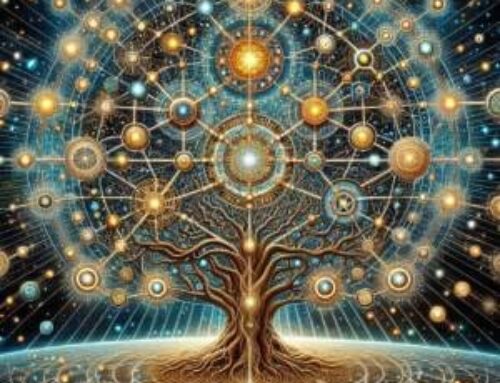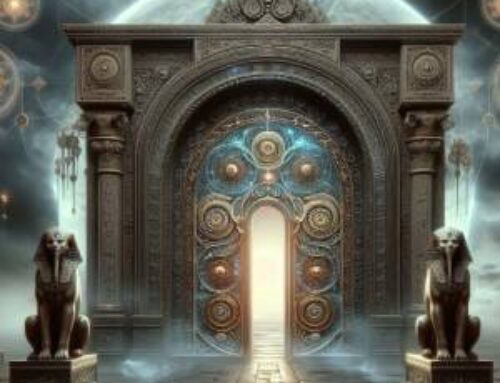Contents
Introduction
“Gnosticism Kabbalah”, a synthesis of Gnosticism and Kabbalah, offers a profound spiritual path that emphasizes personal experiences with the divine and the uncovering of hidden truths. This tradition invites seekers to engage deeply with the mystical aspects of existence, promoting a transformative journey towards enlightenment. Central to “Gnosticism Kabbalah” is the concept of Messiah consciousness, a state of spiritual awakening that transcends ordinary life and connects one intimately with the divine. This article explores the intricacies of “Gnosticism Kabbalah” and the profound impact of Messiah consciousness on personal and collective spiritual growth.

Spiritual growth varies from tradition to tradition, but generally includes personal and emotional community resources that support personal growth and well-being (1).
Subtopics
- The Concept of Messiah in Gnosticism Kabbalah
- Pathways to Achieving Messiah Consciousness
- Practical Applications of Messiah Consciousness
The Concept of Messiah in Gnosticism Kabbalah
Understanding Messiah Consciousness
In “Gnosticism Kabbalah”, Messiah consciousness is not just about waiting for a messianic figure but about awakening the messianic potential within oneself. It represents the highest state of spiritual enlightenment and unity with the divine. This state is often associated with the Sephirah Tiphareth on the Tree of Life, which symbolizes beauty, harmony, and the heart center.
The Messiah consciousness reflects the realization of one’s divine nature, transcending the limitations of the physical and mental realms. It embodies the qualities of love, compassion, and wisdom, leading to a profound inner transformation. This concept encourages individuals to strive for spiritual excellence and to become beacons of light and wisdom in their communities.
Historical and Scriptural Foundations
The concept of the Messiah in “Gnosticism Kabbalah” draws from various scriptural and mystical traditions. In Christian Gnosticism, it parallels the Christ consciousness, representing the divine presence embodied by Jesus. In Kabbalistic terms, it is connected to the Hebrew term MShICh (Meshiach), which signifies the anointed one, reflecting a state of divine anointment and spiritual kingship.
Tiphareth, the sixth Sephirah on the Tree of Life, is crucial in the journey towards Messiah consciousness. It acts as the heart of the Tree, balancing the forces of mercy and judgment, and serves as the point where the divine and human intersect. This Sephirah is often associated with the sun, representing the central source of light and life, mirroring the illumination that Messiah consciousness brings to the soul.
Pathways to Achieving Messiah Consciousness
Inner Work and Self-Realization
Achieving Messiah consciousness requires profound inner work and self-realization. This involves transcending the ego, integrating the shadow aspects of the self, and aligning with the higher self. The process is akin to alchemical transformation, where the base elements of the personality are refined into the pure gold of spiritual awareness.
Inner work involves practices such as self-reflection, meditation, and prayer, which help individuals connect with their inner divinity. By confronting and integrating the shadow, one can release limiting beliefs and behaviors, paving the way for a more enlightened state of being. This journey requires dedication and a willingness to face one’s deepest fears and insecurities.
Meditation and Contemplative Practices
As we know from science, contemplative practices such as meditation and yoga can improve attention, reduce stress and promote self-regulation skills in children, leading to better academic performance and emotional well-being (2).
Meditation is a fundamental practice in “Gnosticism Kabbalah”, helping individuals to connect with the divine and explore the inner dimensions of their soul. Contemplative exercises often focus on visualizing the Tree of Life and the flow of divine energy through its pathways. These meditative practices are designed to awaken the inner senses, allowing practitioners to perceive the deeper spiritual realities beyond the physical world.
Through meditation, individuals can access higher states of consciousness and receive divine insights. Contemplative practices also involve the use of sacred texts and symbols, which serve as gateways to the divine realms. By regularly engaging in these practices, one can cultivate a deeper connection with the divine and progressively awaken to Messiah consciousness.
Rituals and Symbolism
Rituals in “Gnosticism Kabbalah” are designed to align the practitioner’s energy with the divine emanations. These rituals often involve the use of symbols, sacred geometry, and invocations to invoke the presence and guidance of higher spiritual forces. Through ritual, practitioners can create sacred space, connecting with the energies of the Sephiroth and invoking their influence in their lives. Rituals also serve to purify the mind and spirit, preparing individuals for deeper spiritual work.
Symbols and rituals play a crucial role in “Gnosticism Kabbalah”, as they help bridge the gap between the physical and spiritual realms. By engaging with these practices, individuals can tap into the divine energies and facilitate their spiritual transformation. Rituals also foster a sense of community and shared purpose, as practitioners come together to honor the divine and support each other on their spiritual journeys.
Practical Applications of Messiah Consciousness
Ethical Living and Spiritual Integrity
Living in accordance with Messiah consciousness involves maintaining high ethical standards and spiritual integrity. This means making decisions and acting in ways that reflect the divine qualities of love, compassion, and wisdom. By doing so, practitioners contribute to the creation of a harmonious and just world, embodying the principles of the divine in everyday life.
Ethical living requires mindfulness and a commitment to spiritual principles. It involves treating others with kindness and respect, acting with integrity, and striving to make a positive impact on the world. By embodying these qualities, individuals can inspire others and create a ripple effect of positive change.
Healing and Transformation
Messiah consciousness also involves the ability to heal and transform oneself and others. This healing is not just physical but also emotional and spiritual. By tapping into the divine energy, individuals can facilitate deep healing processes, bringing about transformation at all levels of being. This aspect of Messiah consciousness is closely linked to the role of the healer and the guide, helping others to awaken to their own divine potential.
Healing practices in Gnostic Kabbalah may include energy work, prayer, and the use of sacred symbols (3). These practices help to restore balance and harmony within the individual, promoting overall well-being. By embracing their role as healers, practitioners can support the healing and growth of their surroundings.
Community and Global Impact
Finally, those who attain Messiah consciousness often feel a profound sense of responsibility towards the world at large. They are called to act as beacons of light, guiding others towards spiritual awakening and contributing to the collective evolution of humanity. This global impact is seen as an integral part of the divine plan, with each individual playing a unique role in the unfolding of spiritual consciousness on a planetary scale.
Messiah consciousness inspires individuals to take action and make a difference in the world. This may involve community service, activism, or simply being a source of support and inspiration for others. By working together, individuals can create a more just and compassionate world, reflecting the divine qualities of love and wisdom.
Conclusion
“Gnosticism Kabbalah” offers a rich and profound path to spiritual enlightenment, integrating ancient wisdom with modern practices. By exploring the Tree of Life, understanding the process of emanation, and engaging in meditative and ritualistic practices, seekers can unlock the hidden dimensions of existence and connect with the divine. Central to this journey is the concept of Messiah consciousness, a state of spiritual awakening and enlightenment that transcends ordinary existence. The Hermetic Academy provides a structured approach to studying and practicing Gnostic Kabbalah, offering guidance and support for those on this transformative journey.
FAQ- Gnosticism Kabbalah
1. What is Gnostic Kabbalah?
A: Gnostic Kabbalah is a mystical tradition that combines the esoteric wisdom of Gnosticism with the teachings of Kabbalah. It focuses on direct personal experiences of the divine and unlocking hidden truths of the universe.
2. How does the Tree of Life relate to Gnostic Kabbalah?
A: The Tree of Life is a central symbol in Gnostic Kabbalah, representing the structure of the universe and the path to divine knowledge. It consists of ten spheres (Sephiroth) and 22 paths, forming a comprehensive map of spiritual reality.
3. What are the ten Sephiroth?
A: The ten Sephiroth are emanations of the divine, each reflecting a different aspect of the infinite. They include Kether (Crown), Chokmah (Wisdom), Binah (Understanding), Malkuth (Kingdom), and others, each representing different aspects of existence and consciousness.
4. How can I practice Gnostic Kabbalah?
A: Practicing Gnostic Kabbalah involves meditation, contemplation, rituals, and practical applications of its teachings. The Hermetic Academy offers guidance and support for those interested in exploring and practicing Gnostic Kabbalah.
5. Where can I learn more about Gnostic Kabbalah?
A: For more information and in-depth study of Gnostic Kabbalah, the Hermetic Academy provides resources, initiation, guided meditations, webinars, and courses. It is an excellent place to deepen your understanding and practice of this mystical tradition.
References
(1) Gallagher, S., & Newton, C. (2009). Defining Spiritual Growth: Congregations, Community, and Connectedness. Sociology of Religion, 70, 232-261. https://doi.org/10.1093/SOCREL/SRP039.
(2) Shapiro, S., Lyons, K., Miller, R., Butler, B., Vieten, C., & Zelazo, P. (2015). Contemplation in the Classroom: a New Direction for Improving Childhood Education. Educational Psychology Review, 27, 1-30. https://doi.org/10.1007/S10648-014-9265-3.
(3) Rubenstein, E. (2020). The Tree of Life: The Kabbalah of Immortality. Hermetic World, Paphos.





